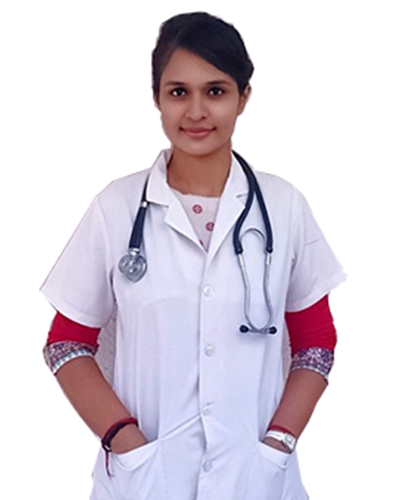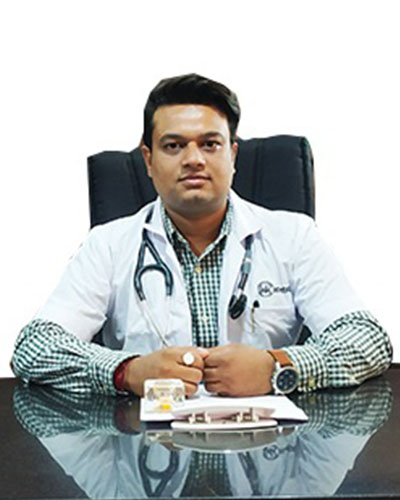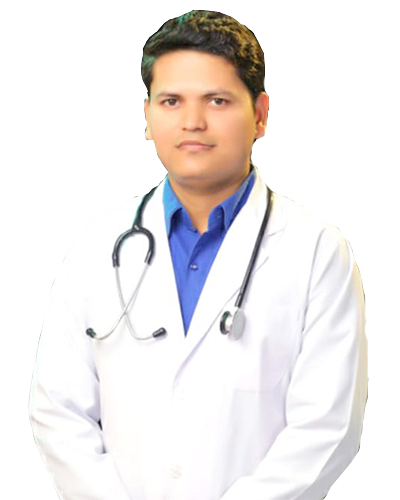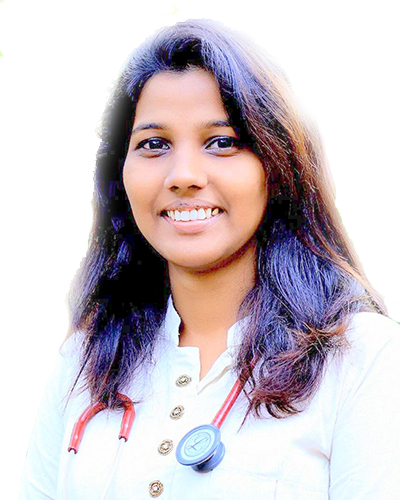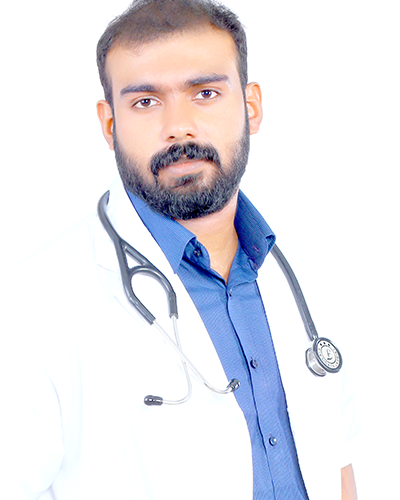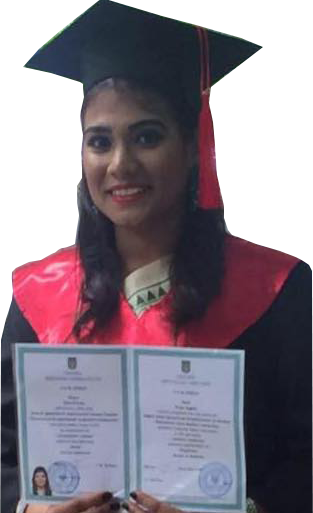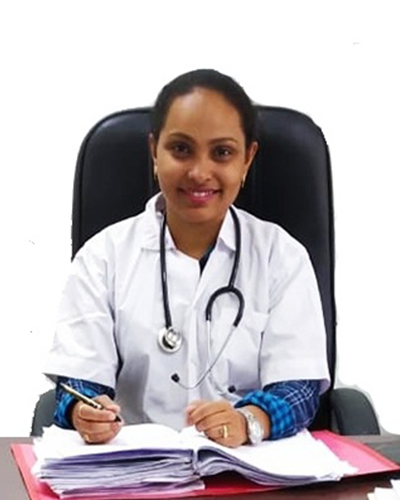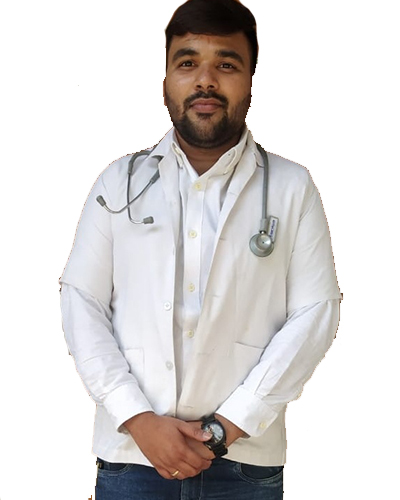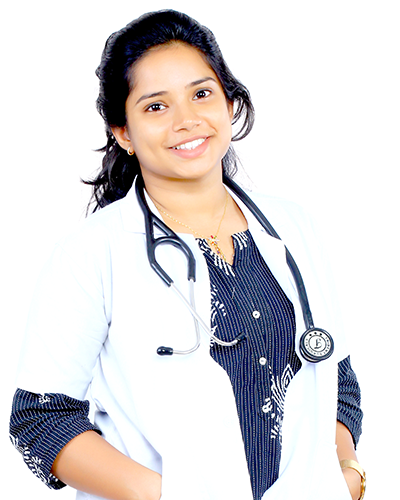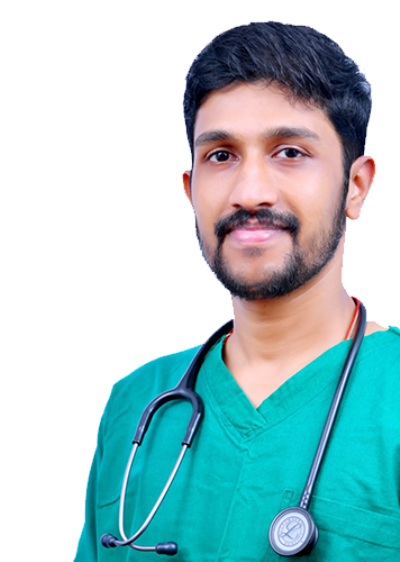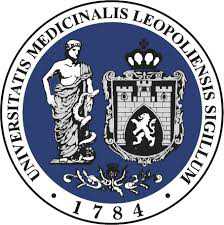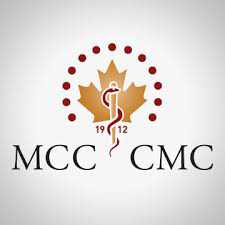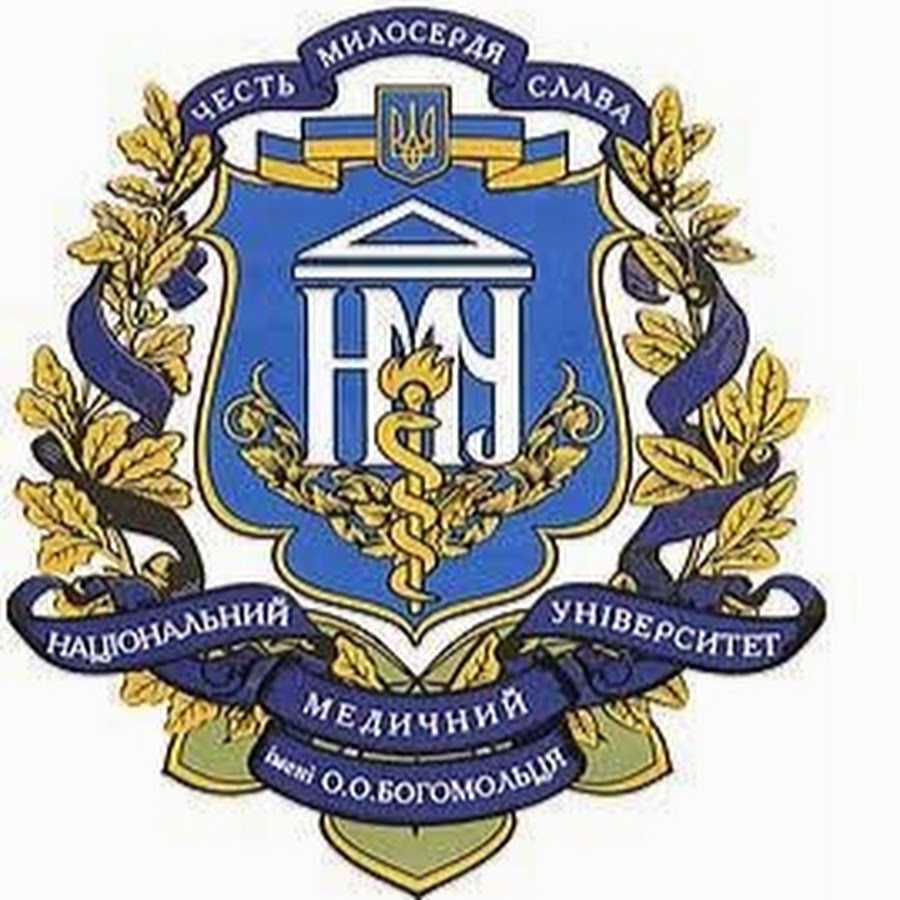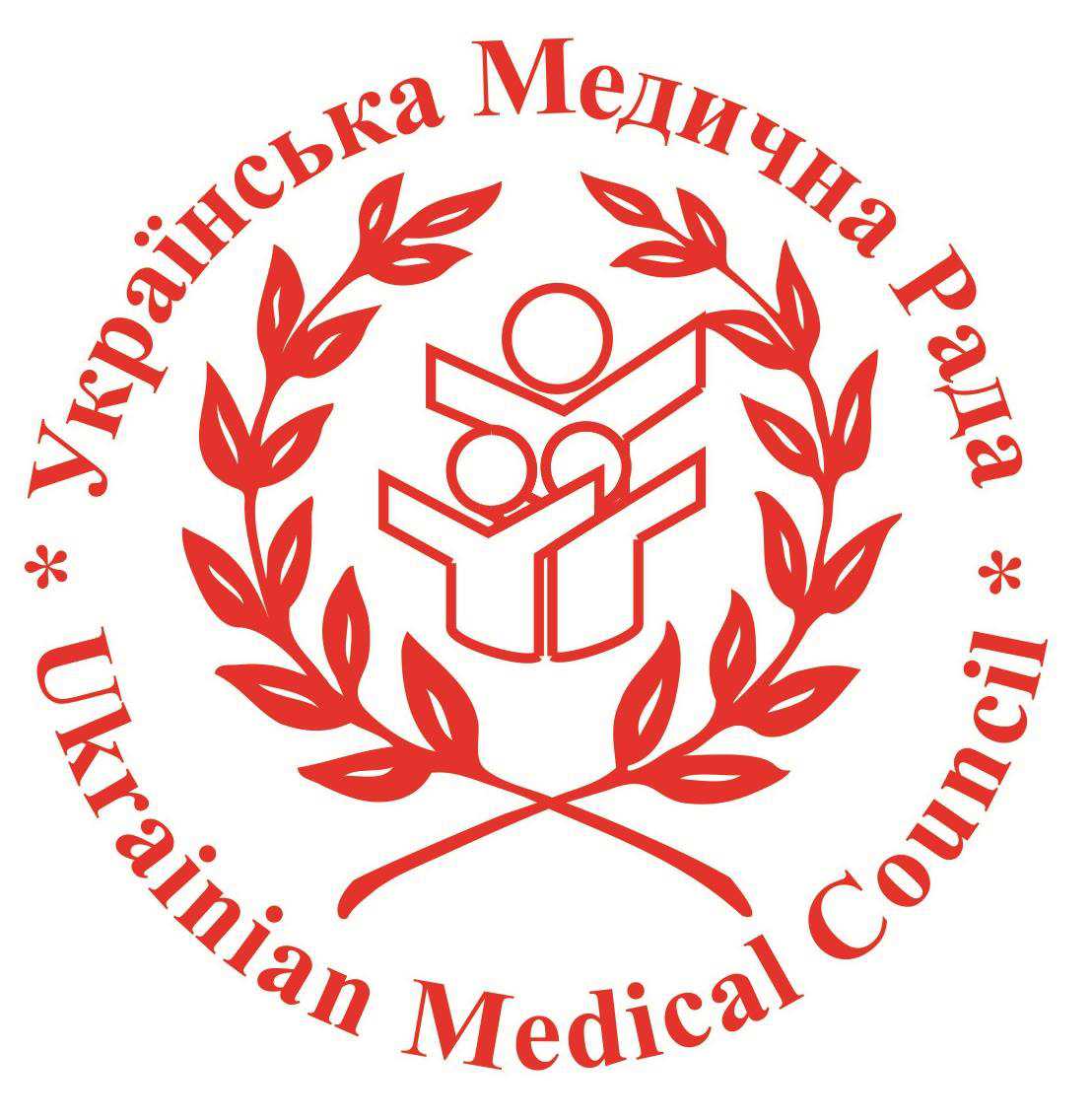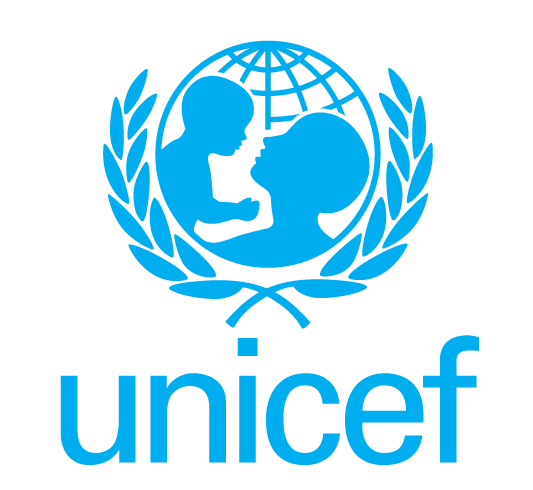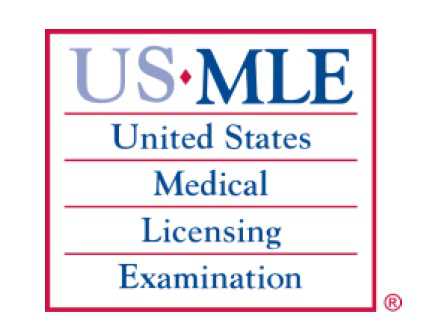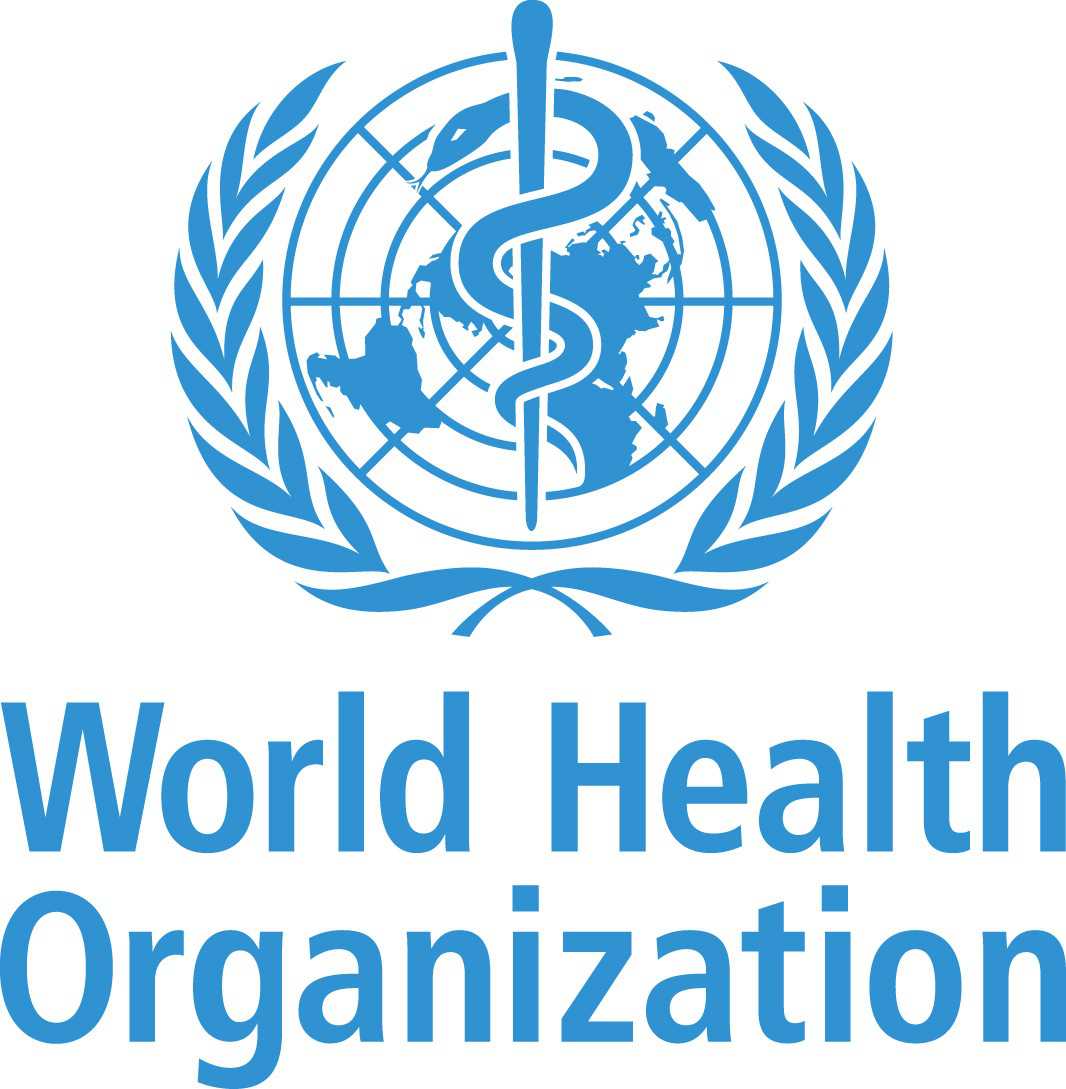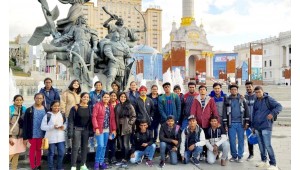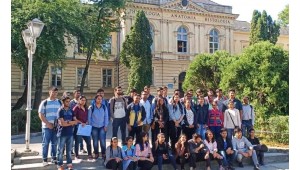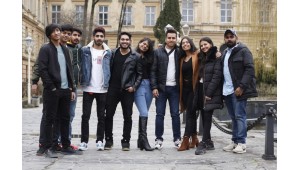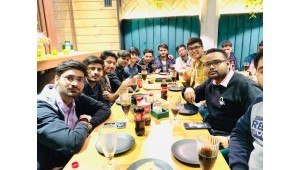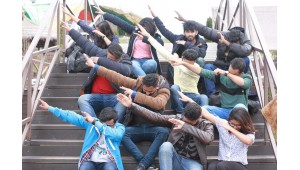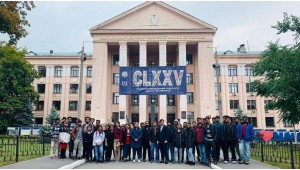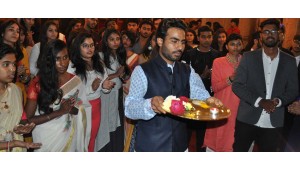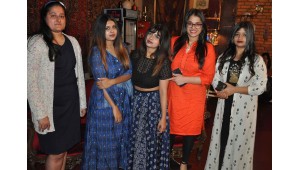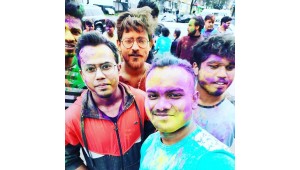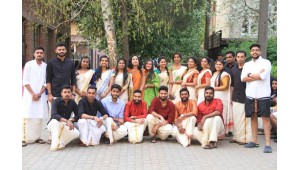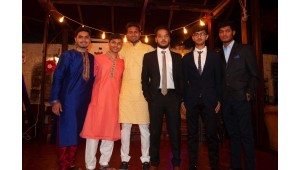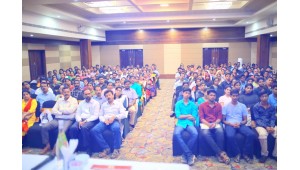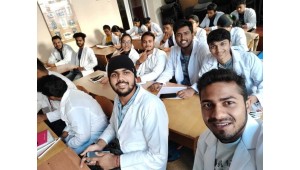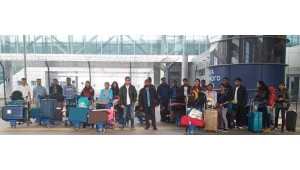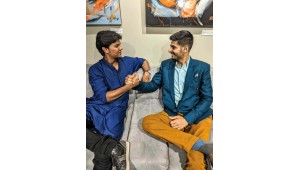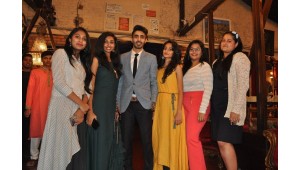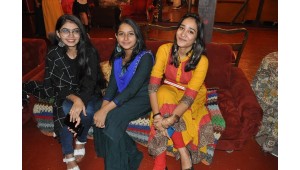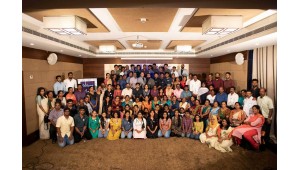JANAKI MEDICAL COLLEGE
LOCATION AND INTERNATIONAL AIRPORT IN THE CITY
LOCATION OF JANAKI MEDICAL COLLEGE, STUDY MBBS IN NEPAL
Janakpur 45600, Nepal
MAP LOCATION
We MBBSUNIVERSITIES.COM guarantee you admission in the best medical colleges of NEPAL with the best fee package.
We the team of doctors in MBBSUNIVERSITIES.COM had enough research through the medical colleges in NEPAL and we will guide you to select the colleges for MBBS in NEPAL
We guarantee you the cheapest package and minimum consultancy charges for MBBS in JANAKI MEDICAL COLLEGE is Recognised by WHO and Medical council of India, we are the No. 1 MBBS admission In Abroad Education guideline providers in India because we are doctors not agents. Just call our doctors because doctors can guide students better than agents
-1800-123-5619
They will give you information to select the Best Universities & be Your Complete Guide
They will provide you Step-by-step Guide for MBBS in Abroad and will help you to get DIRECT ADMISSION IN MBBS
Name of the university: Janaki Medical College.
DURATION OF THE COURSE – 5+1
NATIONAL LANGUAGE - NEPALI
MEDIUM OF INSTRUCTION – ENGLISH
CURRENCY - RUPEE
1NEPALI RUPEE – 0.63 INR
About the country
Nepal is located in central Asia, sandwitched between the North eastern part of india and the South western part of china. It is located mainly in the Himalayas but also includes parts of the Indo Gangaetic plain. It is 48th largest country by population and 93rd largest country by area. Nepali is the official language .The country was never colonized but served as a buffer state between imperial china and British India. Nepal manage the permanent secretariat of the south Asian association for Regional Co-operation(SAARC) of which it’s a founding member.
Nepal is a country of highly diverse and rich geography, culture, and religions. Out world's ten highest mountains, the mountainous north has eight of them including the highest, Sagarmatha, known in English as Mount Everest. The fertile and humid south is heavily urbanized. It contains over 240 peaks more than 20,000 ft (6,096 metres) above sea level.Hinduism is practised by a larger majority of people in Nepal than in any other nation. Buddhism, though a minority faith in the country, is linked historically with Nepal as the birthplace of Siddhartha Gautama, as the Gautam Buddha gave birth to the Buddhist tradition. About half of the population live below the international poverty line of US$1.25 a day.
The era in ancient India when Hinduism was founded, the predominant religion of the country and it was then the name "Nepal" was first recorded in texts from the Vedic period of the Indian subcontinent In the middle of the first millennium BCE. Parts of northern Nepal were intertwined with the culture of Tibet. The centrally located Kathmandu Valley is intertwined with the culture of Indo-Aryans, and was the seat of the prosperous Newar confederacy known as Nepal Mandala. The Himalayan branch of the ancient Silk Road was dominated by the valley's traders. By the 18th century, the cosmopolitan region developed distinct raditional art and architecture, the Gorkha Kingdom achieved the unification of Nepal. The Shah dynasty established the Kingdom of Nepal and later formed an alliance with the British Empire, under its Rajput Rana dynasty of premiers. Parliamentary democracy was introduced in 1951, but was twice suspended by Nepalese monarchs, in 1960 and 2005. The Nepalese Civil War in the 1990s and early 2000s resulted in the proclamation of a secular republic in 2008, ending the world's last Hindu monarchy.
The Constitution of Nepal, adopted in 2015, establishes Nepal as federal secular parliamentary republic divided into seven provinces. Nepal was admitted to the United Nations in 1955, and friendship treaties were signed with India in 1950 and the People's Republic of China in 1960. Nepal is a member of the Non Aligned Movement and the Bay of Bengal Initiative. Nepal is notable for its Gurkha history, particularly during the world wars and the military of Nepal is the fifth largest in South Asia; and has been a significant contributor to United Nations peacekeeping operations.
The terms "NepÄl", "NewÄr", "NewÄl" and "NepÄr" are phonetically different forms of the same word, and instances of the various forms appear in texts in different times in history. The name of the country is also identical in origin to the name of the Newar people. Nepal is the learned Sanskrit form and Newar is the colloquial Prakrit form. A Sanskrit inscription dated 512 CE found in Tistung, a valley to the west of Kathmandu, contains the phrase "greetings to the Nepals" indicating that the term "Nepal" was used to refer to both the country and the people.It has been suggested that "Nepal" may be a Sanskritization of "Newar", or "Newar" may be a later form of "Nepal".
CLIMATE.
Nepal’s climate is very much influenced by elevation as well as by its location in a subtropical latitude, ranges from subtropical monsoon conditions in the Tarai, through a warm temperate climate between 4,000 and 7,000 feet in the mid-mountain region, to cool temperate conditions in the higher parts of mountains between 7,000 and 11,000 feet, to an Alpine climate at altitudes between 14,000 and 16,000 feet along the lower slopes of the Himalaya mountains. At altitudes above 16,000 feet the temperature is always below freezing and the surface covered by snow and ice. Rainfall is ample in the eastern portion of the Tarai and receives from 70 to 75 inches [1,800 to 1,900 millimetres] a year at BÄ«ratnagar and in the mountains, but the western portion of Nepal (where from 30 to 35 inches a year fall at Mahendranagar) is drier.
In kathmandu Valley, average temperatures range from 50° F (10° C) in January to 78° F (26° C) in July, and the lowest and highest temperatures recorded have been 27° and 99° F (-3° and 37° C). The average annual rainfall is about 55 inches, most of which falls in the period from June to September. At PokharÄ the temperature ranges from 40° F (4° C) in January to approximately 100° F (38° C) in June, just before the monsoon. In winter, temperatures during the day rise to 70° F (21° C), creating pleasant conditions, with cool nights and warm days. Because warm rain-bearing monsoon winds discharge most of their moisture as they encounter the Annapurna range, rainfall is quite heavy (about 100 inches) in the PokharÄ Valley.
NEPAL place of interest.
Kathmandu is the capital city and largest city of Nepal. . It is one of the oldest city of South Asia. Its population is about 1.5 million in the city proper, and 3 million in its wider urban agglomeration across the Kathmandu Valley, which includes the towns of Lalitpur, Kirtipur, Madhyapur Thimi, Bhaktapurmaking the total population roughly 2.5 million people and the municipalities across Kathmandu valley. Kathmandu is also the largest metropolis in the Himalayan hill region. Nepali is the most spoken language in the city, while English is widely understood.
The bowl-shaped Kathmandu Valley of central Nepal stands at an elevation of approximately 1,400 metres (4,600 feet) above sea level The valley is historically termed as "Nepal Mandala" and has been the home of Newar culture, a cosmopolitan urban civilisation in the Himalayan foothills. The city was the royal capital of the Kingdom of Nepal and hosts palaces, mansions and gardens of the Nepalese aristocracy. Today, it is the seat of government of the Nepalese republic established in 2008; and is part of the Province No. 3 in Nepalese administrative geography.
Kathmandu is and has been for many years the centre of Nepal's history, art, culture and economy. It has a multiethnic population within a Hindu and Buddhist majority. It is also the home of the Newars. Religious and cultural festivities form a major part of the lives of people residing in Kathmandu.
An important part of the economy is Toursim. In 2013, Kathmandu was ranked third among the top ten upcoming travel destinations in the world by TripAdvisor, and ranked first in Asia. The city is the gateway to the Nepalese Himalayas, and home to seven world heritage sites: the Durbar Squares of Hanuman Dhoka, Patan and Bhaktapur; the Stupas of Swayambhunath and Baudhanath; and the temples of Pashupati and Changu Narayan. There are also seven casinos in the city.
People of Kathmandu are lucky enough to travel in Aeroplane before any land transport. It is called as the City of Temple as it has numerous temples of Hindus god and goddess and that's of Buddhism. It also have 5 UNESCO World Heritage Sites It also have many palace and historically important sites such as Singha Durbar, The other largest cities of Nepal are Pokhara, Biratnagar, Lalitpur, Bharatpur, Birgunj, Dharan, Hetauda and Nepalgunj.
Janakpur
Janakpur is the headquarters of Dhanusa district at province no.2 in Nepal. This city is famous for religious and cultural tourism. Until province assembly voted for a permanent capital it had been declared as the temporary capital for province no. 2. This city was founded in the early 18th century and is also known as Janakpurdham. Janakpur has a population of 1,73,924 as of 2015 which makes it the largest sub-metropolitan city of Nepal. After Biratnagar and Birgunj this city is the third largest city in the Terai and the seventh largest in Nepal. The Nepal Railways used to operate between Jankpur and India.
ABOUT THE JMC
JMC is one of the top medical college in Nepal.
JANAKI MEDICAL COLLEGE AND TEACHING HOSPITAL is a medical school located at BRHAMPURI, JANAKPUR NEPAL, which is a medical school in Chireshwarnath municipality. JANAKI MEDICAL COLLEGE is regulated by Nepal medical council.It provides healthcare education in association with Tribhuvan University institute of medicine and regulated by Nepal Medical council.It is managed by Ram Janaki Health Foundation which is registerd under the Nepalease company Act.The college with established in 2003 with an annual intake of 100 students a year to a MBBS programme. JMC is formally associated with Tribhuvan University a single biggest GOVT owned University of Nepal.Outstanding learning environment exemplary labarotrise and workshop.Well stocked liabrary and e-liabrary cafeteria.Wifi enabled campus.Airconditioned classrooms.JMC has been attached with two hospitals.The teaching process is carried out in Ramdiya campus and internship has been carried out in the city center..
AIRPORTS
Tribhuvan International Airport, which serves the nation's capital and the country's largest metropolitan city of Kathmandu. However, two domestic airports - Pokhara International Airport and Gautam Buddha International Airport - are being constructed and converted into the second and third international airport of Nepal.
About Teaching Faculties in JMC Nepal.
All teaching faculties are leading practitioner who are involved in different clinical research projects besides providing quality education to students.
The faculty at JMC Nepal consists of a huge team of renowned medical practitioners who are involved in various clinical research projects besides imparting quality medical education to the students.
ABOUT THE FEE STRUCTURE OF JANAKI MEDICAL COLLEGE 2019.
For the entire MBBS program of five years and six months including one year of satisfactory internship program after completing the four and half year course, the JMC has provided two options – Full payment at the time of admission and partial payment in installements.
FEE STRUCTURE OF JANAKI MEDICAL COLLEGE 2019. Study MBBS in JANAKI MEDICAL COLLEGE NEPAL.
We Will Upload Complete 2019 Fee Structure!
We Are At Your Service.
ACCOMODATION AND LIFE IN JANAKI MEDICAL COLLEGE
Hostels for the Students
JMC feels proud to provide accommodation facilities to its boy and girl students separately in its logic at Ramdaiya. The hostels for both, boys and girls, are facilitated with 24-hour solar back-up system. The total number of accommodation available at JMC is now for 472 students.
Hostel facilities at the moment include food available at the canteen and within the hostel premises, toilets and bathrooms at a ratio of 1:6, visitors’ room, room for recreational activities, outdoor athletic field and indoor game facilities.
Admission process for MBBS course in NEPAL.
-
Minimum age 17 years
-
The students must score minimum 50 % marks in their 10+2 examinations from a recognized board/university with the Physics, Chemistry, Biology and compulsory English.
-
Must be NEET-UG qualified.
-
Valid Indian Passport and no Visa required.
Required documents for MBBS IN NEPAL
Candidates required following documents to get medical admission in Nepal-
-
10th & 12th Marksheet/Certificate
-
Birth Certificate
-
Nationality certificate/Adhar Card
-
Passport size photograph
-
Birth certificate
-
Pass port
-
NEET score card
NEET compulsion for MBBS in Abroad
Qualifying the National Eligibility cum Entrance Test (NEET) is mandatory for students seeking to pursue MBBS courses from foreign medical institutions, the Medical Council of India (MCI) has declared via a public notice on March 8, 2018.
The information, which had already been made public earlier by the Ministry of Health and Family Welfare (MoHFW) during the time of the release of the NEET notification in February 2018, has now been officially confirmed through the MCI notice. As per the MCI, the existing practice of issuing eligibility certificate to candidates desirous of pursuing MBBS abroad will be done away with from June 1, 2018, onwards and the result of NEET will be treated as the new eligibility certificate from thereon.
The notification clarifies that the new rule has been introduced by the MCI with approval from the Ministry of Health and Family Welfare, Government of India. The ‘Screening Tests Regulations 2002’ and ‘Eligibility Requirement for Taking Admissions in an undergraduate medical course in Foreign Medical Institution Regulation, 2002’, which lay down the rules and regulations for candidates seeking to pursue or who already possess MBBS qualification from abroad, have been accordingly amended by the MCI.
The Central Board of Secondary Education (CBSE), the exam conducting body of NEET 2018, has published the MCI notice on its website on March 10, 2018, for the reference of NEET 2018 aspirants.
What Does MCI Notice Regarding NEET state?
“Public at large is hereby informed that in terms of Clause 4(2A) of the ‘Screening Test Regulation, 2002’ and Clause 8(iv) of the ‘Eligibility Requirement for Taking Admission in an undergraduate medical course in a Foreign Medical Institution Regulation, 2002’, an India National/Overseas Citizen of India who are desirous for taking admission in MBBS or its equivalent medical course in a medical University/College/Institute outside the country on or after 1st June, 2018 shall have to mandatorily qualify the NEET,” the notice reads. The notice further informs that “the requirement of Eligibility Certificate in respect of such person(s) who would take admission in MBBS or equivalent medical course in a medical university outside the country on or after 1st June, 2018, has been dispensed off. The result of the NEET for admission to MBBS Course shall deem to be treated as Eligibility Certificate for such persons.”
NEET Qualification certificate is the new 'eligibility certificate' for students dreaming of MBBS abroad
As per the previous MCI regulations, candidates seeking to study MBBS or equivalent medical courses from abroad were required to obtain an eligibility certificate from MCI if they wished to come back to India for practicing medicine. No candidate without an eligibility certificate from MCI was allowed to appear for Foreign Medical Graduate Examination (FMGE) screening test through which Indian nationals with foreign medical qualfications are granted permission to practice in India.
Now, with the introduction of new changes in MCI regulations, the earlier requirement of obtaining eligibility certificate has been dispensed off and NEET qualification status will be treated as the MCI eligibility certificate for a student seeking admission in MBBS abroad.
What are NEW REGULATIONS of MEDICAL COUNCIL OF INDIA
The Ministry of Health and Family Welfare (MoHFW) earlier clarified that this new rule of mandatorily qualifying NEET for admission to MBBS courses in abroad is not applicable to students who are already pursuing MBBS or equivalent degrees from outside India. “Students who have already taken admission under current regulations to pursue primary medical course by taking Eligibility Certificate from MCI are exempted from qualifying NEET”, stated the clarification note released by MoHFW on February 22, 2018.
The new MCI regulations making NEET mandatory for pursuing MBBS abroad will only be applicable to students seeking to pursue MBBS or equivalent qualification from abroad on or after June 1, 2018. Students who are already pursuing or have gotten admission in foreign medical institutions need not worry about qualifying NEET as long as they have the eligibility certificate issued by MCI.
Free MCI/ FMGE Screening test coaching (FMGE exam preparation at cheapest cost)
Who can Guide you best for FMGE/MCI Screening Test?
Doctors who are registered with MCI
Education consultants
Agents
Freelancing admission agencies
Students studying Abroad
We offer a free* online test series in partnership with the most well-known professors and institutes
Our teaching pattern
-
Topic wise test for all the 19 subjects, student can practice after finishing the topic to assess herself/himself.
-
Subject wise test for all the 19 subjects, student can practice after finishing the topic to assess herself/himself.
-
MCI/FMGE screening test pattern test (full question paper of 300 questions).
-
All question papers will be with time limit as in real time MCI/FMGE screening test.
-
Every time student appears for FMGE paper at our online portal they will feel as they are appearing for real MCI/FMGE screening test, this builds confidence in a student.
-
We give regular ranking according to country, university & overall, so the student can assess where he/she stands exactly.
-
All toppers get lot of study material for free.
-
Once a paper is finished you can recheck it anytime throughout your prescribed time.
-
Answer key is provided with explanation, gives an opportunity to understand better.
-
Our automatic reminding system will help you with making time table for how to study for MCI/FMGE screening test.
-
Every month you will get few hours to interact with doctors, so they can guide you regarding, how to pass MCI/FMGE screening test easily
-
We update our question bank every 6 months to ensure students get the latest questions to practice and pass MCI/FMGE screening test easily
-
Our lectures for all the 19 subjects are recorded by the top-notch faculty teaching for MCI/FMGE screening test from last 16 years from 2002 when MCI/FMGE screening test regulation was passed by Government of India
Studying at best university but finding it hard to pass MCI/FMGE screening test though you are studying in one of the best MBBS in Abroad Medical University and you are still finding it hard to study or revise your curriculum for MCI/FMGE screening test don’t get stressed we at MBBSUNIVERSITIES.com will help you to achieve your goal of becoming a world class doctor and passing MCI/FMGE screening test
Services provided by MBBSUNIVERSITIES.com
MBBSUNIVERSITIES.com is the best consultancy for MBBS admissions and is known for its professional approach. We guarantee admissions to the students who meets the eligibility criteria and provides us with passport and required documents at the right time. Depending on the eligibility criteria, he/she can take admission in
Philippines,
Bangladesh,
China,
Russia,
Kazakhstan,
Kyrgyzstan or
Ukraine through us.
Our doctors are skilled enough to give parents and students the best guidance they deserve, we will share our experience from how to decide a country and university & how to study for MCI/FMGE screening test, here you will get transparent information from those doctors who were once students, they will give you not only true information about MBBS Abroad but they will give information about real experience that they faced and overcome during their journey of becoming a doctor.
With offices in more than 100 cities we are always in reach of parents and students to provide them with the best and transparent services. Our mission is to provide real information to the medical aspirants who are wishing to pursue MBBS in Abroad, we understand parents put there hard earned money on stake when deciding MBBS abroad University for students that is why we give them true and transparent information that helps them take a better decision.
MCI APPROVED COLLEGES IN RUSSIA
-
Ryazan State Medical University
-
Altai State Medical University
-
Astrakhan State Medical Academy of Federal Agency of Health Care and Social Development
-
Astrakhan State Medical University
-
Bashkir State Medical University
-
Bashkirian State Medical University
-
Crimean Federal University
-
Dagestan State Medical University
-
Far Eastern Federal University
-
I. M. Sechenov First Moscow State Medical University
-
I. M. Sechenov Moscow Medical Academy
-
Immanuel Kant Baltic Federal University
-
Irkutsk State Medical University
-
Kabardino-Balkarian State University
-
Kazan Federal (Volga) University
-
Kazan State Medical University
-
Kemerovo State Medical Academy
-
Kuban State Medical University
-
Kursk State Medical University
-
Mari State University
-
Mordovia N.P.Ogerev State University
-
Moscow State University of Medicine and Dentistry
-
National Medical University
-
National Research Nuclear University "MIFI"
-
Nizhny Novgorod State Medical Academy
-
North Ossetian State Medical Academy
-
North-Caucasian State Humanitarian and Technological Academy, Cherkessk
-
North-Eastern Federal University named after MK Ammosov
-
Northern State Medical University
-
Novosibirsk National Research State University
-
Orel State University
-
Orenburg State Medical University
-
Penza State University
-
Peoples’s Friendship University of Russia
-
Perm State Medical University
-
Pskov State University
-
Rostov State Medical University
-
Russian National Research Medical University
-
Russian Peoples Friendship University
-
Russian State Medical University,Moscow
-
Ryazan State I P Pavlov Medical University
-
Saint Petersburg State Medical Academy
-
Saint Petersburg State Medical University
-
Saint-Petersburg Pavlov State Medical University
-
Saratov State Medical University
-
Saratovskiy State Medical University
-
Sechenov Moscow Medical Academy
-
Siberian State Medical University
-
Smolensk State Medical University
-
St. Petersburg State Pediatric Medical Academy
-
St. Petersburg State Pediatric Medical University
-
Stavropol State Medical University
-
Syktyvkar State University named after P Sorokin
-
Tambov State University
-
The Belgorod State University
-
The Chechen State University
-
The Chuvash State University named after I.N. Ulyanov
-
The First Moscow State Medical University
-
The First St. Petersburg State Medical University
-
Tombosky State University named after G.R. Derzhavin
-
Tula State University
-
Tver State Medical University
-
Ulyanovsk State University
-
Volgograd Medical Academy
-
Volgograd State Medical University
-
Voronezh State Medical University
-
Yaroslav-the-Wise Novgorod State University
-
Yaroslavl State Medical Academy
-
Yaroslavl State Medical Academy YSMA
-
Yaroslavl State Medical University


